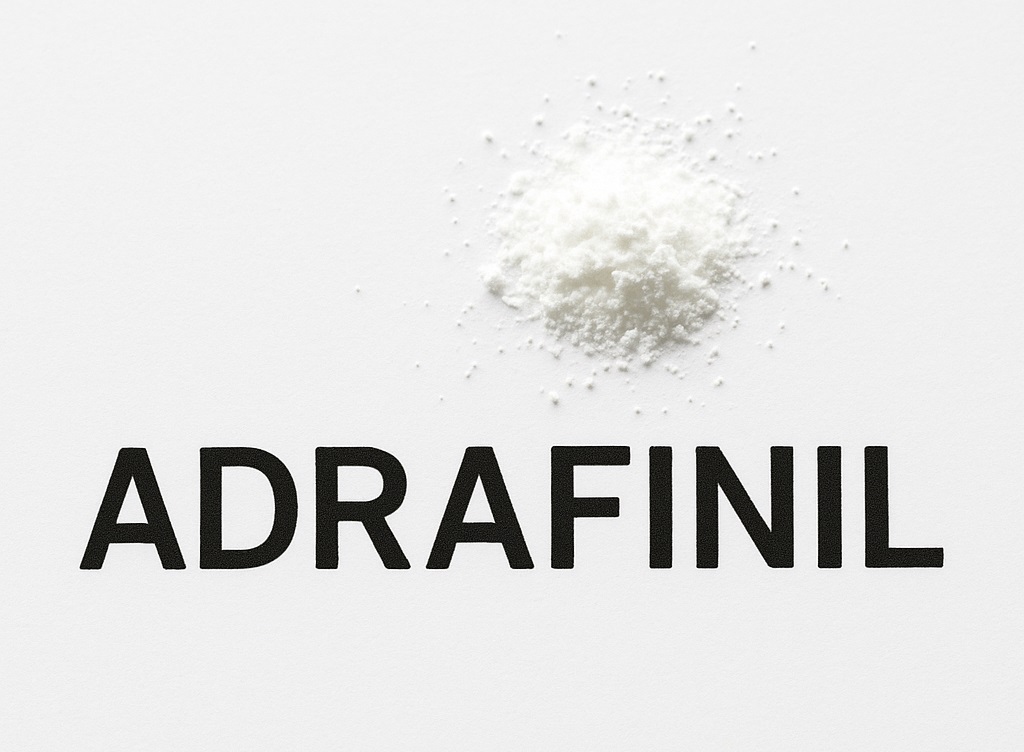Adrafinil is a synthetic compound developed in the 1970s as a prodrug: it’s converted in the body into modafinil, a clinically approved wakefulness-promoting agent. Unlike modafinil and armodafinil, adrafinil isn’t itself active—it’s metabolized in the liver to produce an alertness effect similar to its downstream counterpart.
The mechanism involves inhibiting dopamine reuptake and activating adrenergic α₁ receptors, which helps improve attention and wakefulness. Its metabolite profile and indirect action contribute to a slower onset—typically about 45 to 90 minutes.
Advantages of Adrafinil
- Accessible: Unlike modafinil or armodafinil, adrafinil is often available without a prescription in many jurisdictions.
- Economical: Generally cheaper than prescription eugeroics—attractive to those just starting out in nootropic exploration.
- Gentler experience: Many users find it provides wakefulness with fewer jitters or over-stimulation compared to caffeine or amphetamines.
Considerations & Potential Risks
- Liver strain: Because adrafinil needs liver metabolism to convert into modafinil, long-term use can elevate liver enzymes and must be monitored.
- Less predictable potency: Variations in metabolism mean effects may differ widely between users.
- Retired medical approvals: It was once sold in Europe under the brand Olmifon but was withdrawn after authorities deemed its benefit-risk profile unsatisfactory.
- Potential side effects: Reported reactions include agitation, mild gastrointestinal upset, skin irritation, and rare dyskinesias (involuntary facial movements).
Legal & Regulatory Landscape
- Australia & the UK: Legal ambiguity—some sources suggest it’s unscheduled, but importation may still be subject to customs scrutiny.
- France: Used until 2011, then withdrawn from the market.
- U.S.: Not FDA-approved, but unregulated, meaning it can be purchased as a chemical or supplement rather than as a prescription drug.
- Sports: Prohibited by the World Anti-Doping Agency (WADA), along with modafinil, due to its wake-promoting properties.
Adrafinil vs. Other Eugeroics: How It Stacks Up
While Adrafinil is appreciated for its accessibility and affordability, it’s just one of several eugeroics available today. Each has unique properties in terms of pharmacology, effectiveness, onset, and legality. Here’s a detailed comparison to help you understand how Adrafinil compares to its peers.
Mechanism of Action
| Eugeroic | Mechanism of Action |
|---|---|
| Adrafinil | Prodrug converted in liver to modafinil (dopamine reuptake inhibition) |
| Modafinil | Inhibits dopamine reuptake, influences orexin, histamine, and other systems |
| Armodafinil | R-enantiomer of modafinil; same action, longer duration |
| Flmodafinil | Modafinil analog with fluorine atoms; higher bioavailability |
| Solriamfetol | Dual dopamine/norepinephrine reuptake inhibitor (DNRI) |
| Pitolisant | Histamine H₃ receptor inverse agonist (boosts histamine & wakefulness) |
| Fluorenol | Dopaminergic activity (mechanism still under research) |
Popularity & Use Cases
| Use Case | Why Adrafinil Appeals |
|---|---|
| Beginners or nootropic newcomers | Easy access and lower cost |
| Long shifts / demanding study | Gentle, steady alertness |
| Research or pharmaceutical study | Precursor to modafinil for lab settings |
| Budget-conscious users | Effective, non-prescription alternative |
Adrafinil occupies a unique niche: it’s a designer wakefulness agent that grants access to modafinil-like effects without a prescription, but with caveats around safety and liver use. While many users appreciate its availability and cost-saving appeal, experts recommend cautious use—especially due to metabolic variability and unknown long-term effects.
If you’re interested, I’d be happy to create a comparison chart between adrafinil, modafinil, armodafinil, solriamfetol, or other eugeroics.
